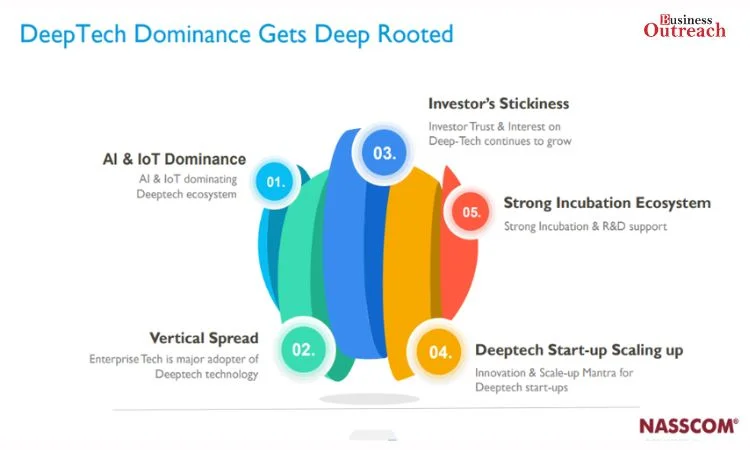In 2023, the count of deep-tech startups in India surged; 480 new enterprises added to its innovation ecosystem, according to leading startup tracker Tracxn. Surely an edge and a boost, this gives the country’s potential as being among the hubs for advanced technological developments across domains such as artificial intelligence, robotics, space tech, and more. But funding woes have jeopardized this heady growth, bringing the otherwise fast-paced journey of these promising startups to a grinding halt.

PC: Inc42
The boom in deep-tech startups is part of a larger trend powered by technological innovation and entrepreneurship. Today, deep-tech startups, those requiring material scientific or engineering innovation and IP, form an important component of India’s startup ecosystem. However, such startups face unique challenges, especially while securing sufficient funding for research, development, and commercialization; these are….
One of the key challenges can be funding deep-tech start-ups in India. According to industry estimates, there could be about 3,000 deep-tech start-ups in this country; however, less than 20% of them have been able to raise sufficient funding. The high degree of complexity in the projects, extended development cycles, and the perceived risks in those projects keep their potential investors knocking on their doors time and again for requitals.
In this regard, the Government of India has further taken a few initiatives to encourage innovation and investment in deep-tech-based startups. The India AI Mission, for example, has allotted funding of almost ₹2,000 crore for deep-tech startups. This fund was aimed at jump-starting R&D within the chosen entities by offering them the much-needed access to financing during early stages of their fund cycle.
The 2023 draft of the National Deep Tech Startup Policy is aimed at creating an enabling environment for deep-tech startups. According to the policy, it is important to create robust academic engagement with industries and startups that can prove useful in making the process of translating innovative research into commercially feasible solutions smooth and seamless. It also proposes an institutional framework—a Centre for Deep Tech Translation—in a bid to bridge the wide chasm between breakthrough research and marketable solutions.
Though bright spots still exist, the investment climate for startups in India has, on balance, weakened over the past two years. Funding to startups hit a six-year low in 2023, reportedly witnessing a 62 percent drop compared with previous years. This slide has affected not just deep-tech startups but also the entire startup ecosystem, reflecting a wait-and-watch attitude among investors over uncertainties in the economy.
The Draft NDTSP has pointed out the need for specific measures designed to attract more investment into deep-tech sectors that are reigning high on its agenda. These include everything from creating incentives for venture capitalists to invest in high-risk, high-reward technologies to creating a regulatory environment that can foster new innovative business models to spur growth of the deep-tech startup innovation ecosystem. Resources, mentorship programs, and much more are needed to help start-ups navigate deep-tech landscapes.
That is why the surge of deep-tech start-ups in India indicates a growing recognition of its potential to turn out to be a global leader in technological innovation. However, financial and infrastructural challenges bullshit the growth of such startups and are supposed to be addressed for that matter. Much more apparent government support and diversified sources of funding are what would take wayward deep-tech start-ups toward a more vibrant and sustainable ecosystem in India.
While these problems are far from completely resolved and the nation is still grappling with them, a good start has been made in the initiatives taken up during 2023. The key to making India’s deep tech startups not just surviving but also thriving, thereby contributing to the country’s technological advancement and economic growth, lies in successful policy execution and funding mechanisms.















